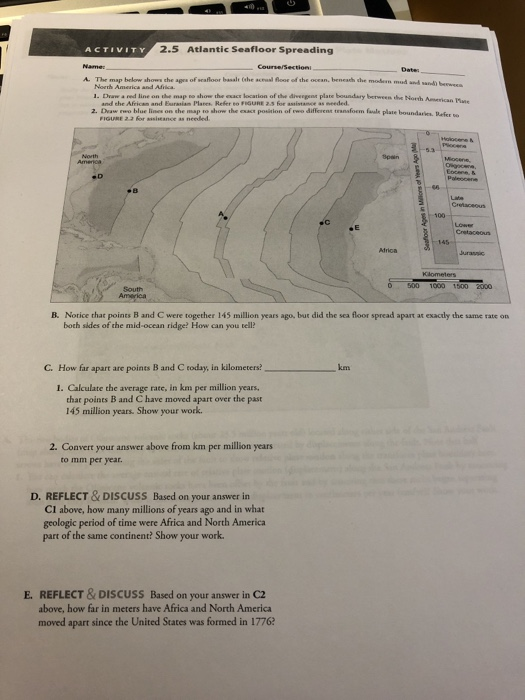It spreads 2 5 centimeters 8 2 inches every year and forms an ocean trench about the size of the grand canyon.
The rate of spreadding of the atlantic sea floor.
This means that north america and europe are moving away from each other at about the rate it takes for your fingernails to grow.
Ranges of spreading throughout the world s oceans.
Distance 72 km x 100 000 cm km 7 200 000 cm rate of spreading 7 200 000 cm 2 000 000 yr 3 6 cm yr tii 1.
Ridges that spread at rates 20 mm yr are referred to as ultraslow spreading ridges 3 13 e g the gakkel ridge in the arctic ocean and the southwest indian ridge.
1cm yr to 10 cm yr.
The dates revealed that the atlantic ocean was opening by seafloor spreading from the mid atlantic ridge at a rate of about 0 02 metres per year.
Miles per hour is distance traveled divided by the time age so in this case it is the distance that the seafloor has traveled divided by the age.
Intermediate ridges have a spreading rate of 40 90 mm year while slow spreading ridges have a rate less than 40 mm year.
The mid atlantic ridge for instance is a slow spreading center.
R d t or r 9 5 10 7 cm 6 5 10 7 years 1 46 cm yr.
Determine the rate of seafloor spreading for the pacific and north atlantic ocean basins.
Seafloor spreading rates are much more rapid in the pacific ocean than in the atlantic and indian oceans.
Remember rate of motion e g.
Measure from the center of the spreading center to a known age point on the plate rather than from 65 ma on the eastern plate to 65 ma on the western plate.
The age spreading rate and asymmetry at each grid node are determined by linear interpolation between adjacent seafloor isochrons in the direction of spreading.
For example here is the calculation for the south atlantic.
These age data also allow the rate of seafloor spreading to be determined and they show that rates vary from about 0 1 cm 0 04 inch per year to 17 cm 6 7 inches per year.
It spreads about 6 16 centimeters 3 6 inches every year.
The highest known rate is over 200 mm yr in the miocene on the east pacific rise.
We have used our echo sounding data discussed in a previous expedition to make the profile of the mid atlantic ridge along the seafloor shown below.
The east pacific rise on the other hand is a fast spreading center.
Ages for ocean floor between the oldest identified magnetic anomalies and continental crust are interpolated by geological estimates of the ages of passive continental margin segments.
The highest known rate is over 200 mm yr in the miocene on the east pacific rise.

